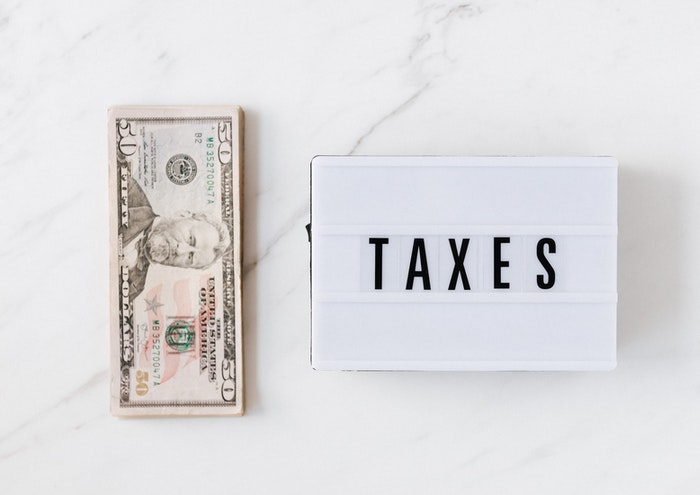Although it’s been three years since the Supreme Court of the United States issued its landmark opinion on South Dakota v. Wayfair, Inc. (June 21, 2018), some businesses continue to underestimate the impact of the decision. That’s a gamble that won’t pay off for long.
If you’re familiar with the Wayfair ruling, you know it broke the hold physical presence had on sales tax nexus — the connection between a state and business that allows the state to tax the business. Before Wayfair, states could require a business to collect and remit sales tax only if the business had a physical presence in the state, such as a brick-and-mortar facility, employees, or inventory. Wayfair granted states the authority to impose a sales tax obligation on businesses with no physical tie to the state (i.e., remote sellers).
Physical presence in a state still creates nexus, and for many businesses it continues to be the primary nexus trigger. However, post-Wayfair, a remote seller can also establish nexus solely through sales activity in a state. This is economic nexus, and it has transformed the sales tax landscape.
States were quick to enact economic nexus following the Wayfair decision: Today, every state with a general sales tax has an economic nexus law on the books. In fact, Missouri is the only state not yet requiring out-of-state sellers to collect and remit sales tax, and its economic nexus law will take effect January 1, 2023.
If your company has business interests outside your home state, understanding how economic nexus can affect your sales tax obligations in those states is paramount. Two key considerations are economic nexus thresholds and how soon you’re required to register after crossing a threshold.
What’s an economic nexus threshold?
Although all state economic nexus laws require remote sellers to collect and remit sales tax, not all remote sellers have economic nexus in all states where they sell. Whether you’re required to register in a state depends on whether you’ve met a state’s economic nexus threshold.
Following the example of South Dakota, every state provides an exception for companies with little business in the state — those selling beneath the state’s economic nexus threshold. Unfortunately, for businesses, each state’s economic nexus threshold is unique.
South Dakota set a threshold of $100,000 in sales or 200 transactions in the state in the current or previous year, and many other states did the same (e.g., Arkansas, Hawaii, and Maine). Some were loath to stray far from the precedent established by South Dakota, for fear their law would be challenged: California initially adopted South Dakota’s threshold to the word, despite having one of the largest economies in the world, but it then eliminated the transaction threshold and upped the sales threshold to $500,000. Texas set a $500,000 sales threshold from the outset, with no transaction threshold, while New York went for $500,000 in sales and 100 transactions. One of the last states to adopt economic nexus, Florida adopted a sales-only threshold of $100,000.
Knowing the sales and/or transaction volume is the first step, but to determine whether you have nexus with a state, you need to know which sales to count. Some states include only retail sales of tangible personal property in their economic nexus threshold, while others include sales of services and/or electronically transferred goods. Some states include exempt goods and/or services, so it’s possible to trigger a reporting requirement even if all your sales are exempt.
Anyone selling through a marketplace needs to know whether to count those transactions when calculating the economic nexus threshold. Sales made through a marketplace generally count toward the marketplace facilitator’s threshold, but that’s not always the case.
Another consideration is the threshold period. Although many states followed South Dakota’s lead and went with the current or preceding calendar year, some took a different approach. Rhode Island uses the preceding calendar year alone, while in New York, the threshold covers the preceding four sales tax reporting periods. This state-by-state guide to economic nexus laws provides state-specific details.
If your sales into a state exceed that state’s economic nexus threshold, you need to register for sales tax and comply with all relevant sales tax laws.
How soon do I need to register after crossing an economic nexus threshold?
Registration requirements also vary by state. You’ll need to register within 60 days of crossing the economic nexus threshold in some states, and within 30 days in others. A handful of states even require remote sellers to register and start collecting sales tax as soon as the economic nexus threshold is crossed (i.e., before the next transaction).
To be ready to register within minutes or weeks of crossing a threshold, you’ll need a thorough understanding of each state’s threshold and a way to closely track sales activity in each state. A period of heightened sales can catapult a business well over a threshold, so be especially watchful during the holiday shopping season, sales tax holidays, and other significant sales events.
You’ll also need to pay attention to legislative and regulatory changes because states can amend their economic nexus laws like any other sales tax law. Perhaps even more so since sales tax economic nexus laws are so new.
For example, Kansas started out with no small-seller exception, so just one sale into the state would trigger economic nexus. Earlier this year, lawmakers in the state overrode a gubernatorial veto to establish an economic nexus threshold starting July 1, 2021. Iowa and North Dakota are among the states that eliminated the transaction threshold and either increased or decreased the sales threshold. And Arizona built change into its economic nexus law: The threshold started at $200,000, then dropped to $150,000 before settling at $100,000.
Other changes include Kentucky giving remote sellers 30 more days to register after meeting its economic nexus threshold, and expanding economic nexus laws to other types of taxes and fees (e.g., franchise tax).
Whether you know about it or not, Wayfair can impact your businesses
Unfortunately, many businesses remain unaware of the Wayfair ruling and its possible impact on their business. Two years after the ruling, in March 2020, only about 57% of businesses surveyed by Potentiate knew about Wayfair and the new sales tax obligations it could create. Among those who did know about the decision, roughly 59% said it had impacted their business, and 45% said it resulted in new registration and collection requirements.
COVID-19 may have exacerbated the challenges initiated by Wayfair by driving so much consumerism online. According to a poll conducted during Avalara’s May 2021 CRUSH Virtual conference, 83% of respondents said their tax obligations had increased over the past year although only 28% introduced new sales channels. In fact, only 39% of businesses surveyed said they were confident they’re fully compliant today, while 27% said they were “not confident.”
Whether you’re confident about your nexus footprint or aren’t sure, taking a free sales tax risk assessment can help you determine where you may have unrecognized sales tax obligations.

Gail Cole is a Senior Writer at Avalara. She’s on a mission to uncover unusual tax facts and make complex laws and legislation more digestible for accounting and business professionals.




